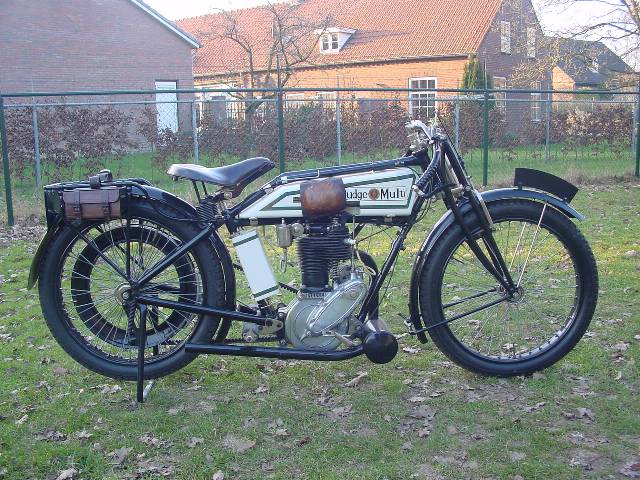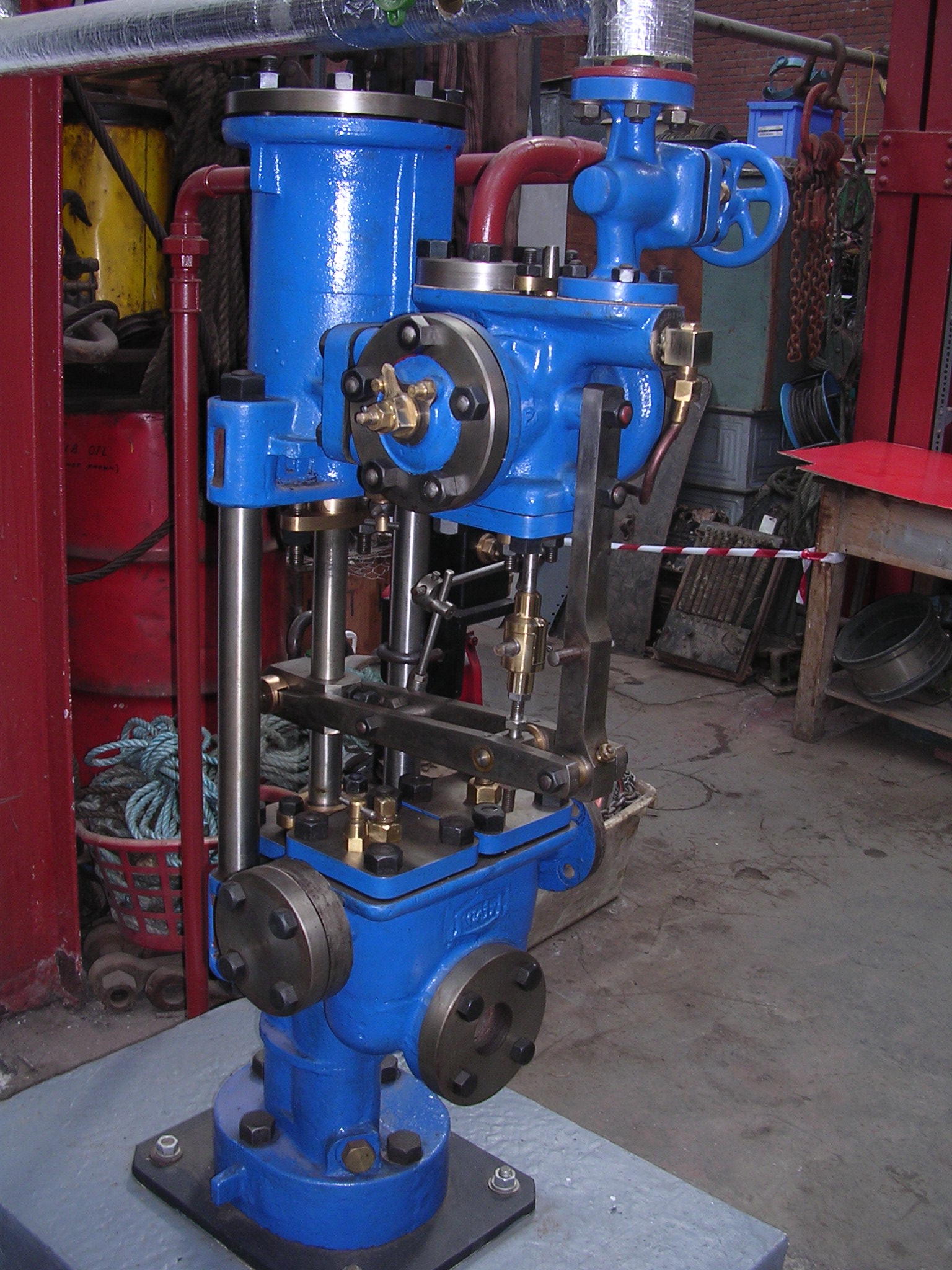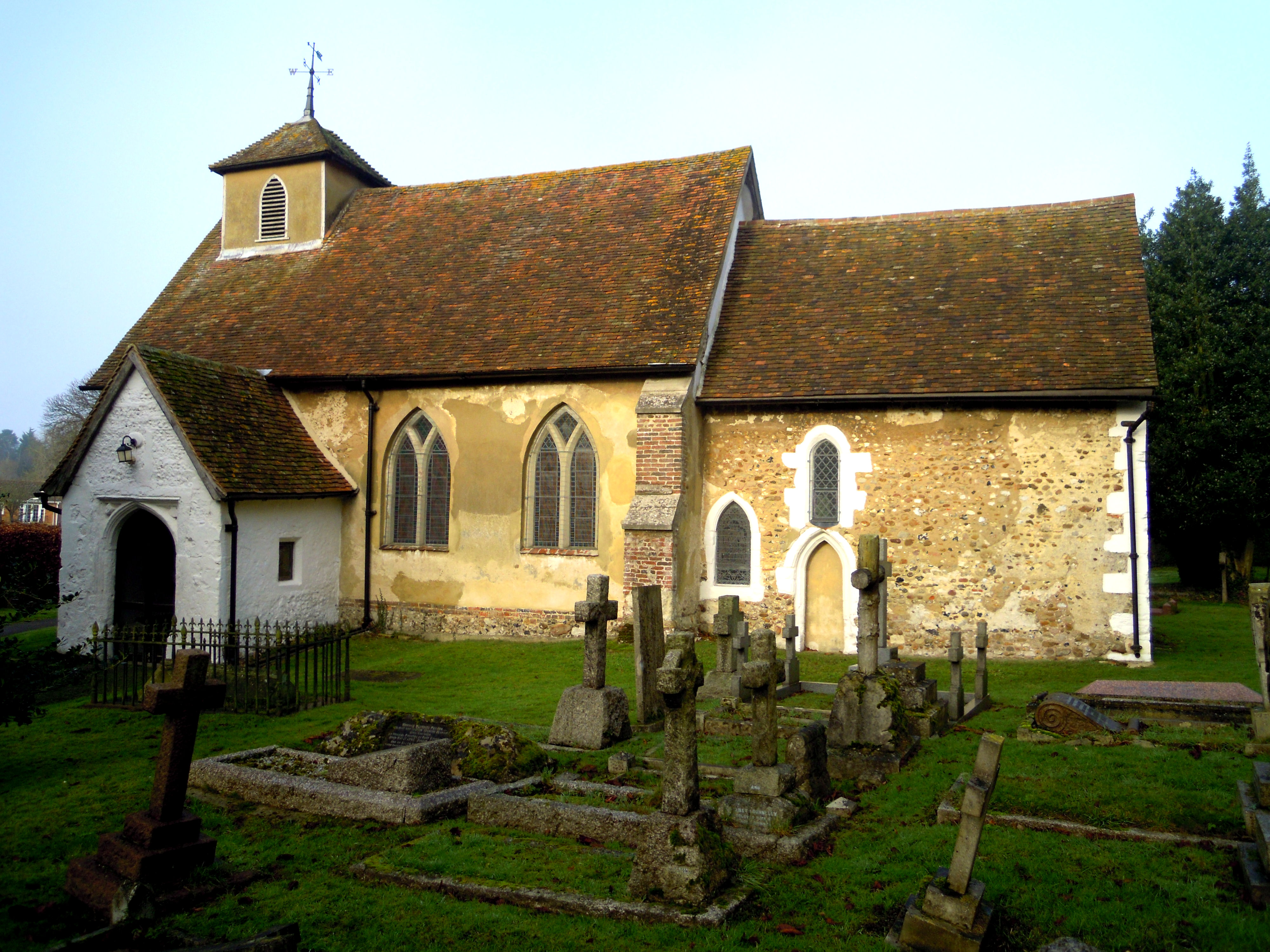|
Powerwheel
Cyril Pullin (18 August 1892 – 23 April 1973) was a British inventor, engineer and motorcycle race driver. His inventions contributed to the rotary engine and the helicopter. His son was the pilot for the first successful British helicopter flight in 1938. Cyril Pullin died in 1973 aged 80. Early life Cyril George Pullin was born 1892 in Wandsworth, London. He became a well known motorcycle racer and in 1914 won the Isle of Man TT race. Racing career In 1914 Cyril Pullin won the Isle of Man TT with a record average of 49.49 mph on a Rudge Multi which had a variable belt drive gearbox giving an effective option of over 20 speeds which made a huge difference on the hills. The race, which ran for over four hours was led by Oliver Godfrey (riding an Indian) and Howard R Davies (on a Sunbeam) who dead heated for second place when Pullin overtook them both to win by only 6.4 seconds. Pullin's success on the day was sadly marred when fellow competitor in the Junior ... [...More Info...] [...Related Items...] OR: [Wikipedia] [Google] [Baidu] |
Ascot-Pullin Motorcycles
Ascot-Pullin Motorcycles was a British motorcycle manufacturer founded by Cyril Pullin as the Ascot Motor & Manufacturing Co Ltd. at Letchworth, Hertfordshire in 1928. An inventor and winner of the 1914 Isle of Man TT, Pullin had been developing ideas for motorcycle designs since 1920 with Stanley Groom, and had patented a two-stroke engine motorcycle with pressed sheet metal frame and forks. After leaving Douglas the first time, Pullin worked with Groom again to refine his ideas and develop and patent the Ascot-Pullin motorcycle. Fewer than 500 were built and sales were poor, resulting in the company's liquidation in 1930. Ascot-Pullin 500 Pullin was an innovator and the Ascot-Pullin 500 OHV single had the engine horizontally mounted and enclosed with a pressed-steel frame. As well as the first use of hydraulic brakes on a motorcycle, Pullin also designed a telescopic centre stand and an adjustable windshield with a windscreen wiper and rear-view mirror, as well as a ful ... [...More Info...] [...Related Items...] OR: [Wikipedia] [Google] [Baidu] |
Rotary Engine
The rotary engine is an early type of internal combustion engine, usually designed with an odd number of cylinders per row in a radial configuration. The engine's crankshaft remained stationary in operation, while the entire crankcase and its attached cylinders rotated around it as a unit. Its main application was in aviation, although it also saw use in a few early motorcycles and automobiles. This type of engine was widely used as an alternative to conventional inline engines (straight or V) during World War I and the years immediately preceding that conflict. It has been described as "a very efficient solution to the problems of power output, weight, and reliability". By the early 1920s, the inherent limitations of this type of engine had rendered it obsolete. Description Distinction between "rotary" and "radial" engines A rotary engine is essentially a standard Otto cycle engine, with cylinders arranged radially around a central crankshaft just like a conventional ra ... [...More Info...] [...Related Items...] OR: [Wikipedia] [Google] [Baidu] |
Wandsworth
Wandsworth Town () is a district of south London, within the London Borough of Wandsworth southwest of Charing Cross. The area is identified in the London Plan The London Plan is the statutory spatial development strategy for the Greater London area in the United Kingdom that is written by the Mayor of London and published by the Greater London Authority. The regional planning document was first pu ... as one of 35 major centres in Greater London. Toponymy Wandsworth takes its name from the River Wandle, which enters the River Thames, Thames at Wandsworth. Wandsworth appears in Domesday Book of 1086 as ''Wandesorde'' and ''Wendelesorde''. This means 'enclosure of (a man named) Waendel', whose name is also lent to the River Wandle. To distinguish it from the London Borough of Wandsworth, and historically from the Wandsworth District (Metropolis), Wandsworth District of the Metropolis and the Metropolitan Borough of Wandsworth, which all covered larger areas, it is al ... [...More Info...] [...Related Items...] OR: [Wikipedia] [Google] [Baidu] |
Sunbeam Cycles
Sunbeam Cycles made by John Marston Limited of Wolverhampton was a British brand of bicycles and, from 1912 to 1956 motorcycles. On John Marston's death after the First World War it was bought by Nobel Industries, Nobel became ICI. Associated Motor Cycles bought it in 1937; then, BSA bought Sunbeam in 1943. Sunbeam Cycles is most famous for its S7 balloon-tyred shaft-drive motorcycle with an overhead valve in-line twin engine. History Sunbeam Cycles was founded by John Marston, who was born in Ludlow, Shropshire, UK in 1836 of a minor landowning family. In 1851, aged 15, he was sent to Wolverhampton to be apprenticed to Edward Perry as a japanware manufacturer. At the age of 23 he left and set up his own japanning business making any and every sort of domestic article. He did so well that when Perry died in 1871 Marston bought Perry's business and amalgamated it with his own. In 1887 Marston began making bicycles and, on the suggestion of his wife Ellen, he adopted th ... [...More Info...] [...Related Items...] OR: [Wikipedia] [Google] [Baidu] |
Ayrshire
Ayrshire ( gd, Siorrachd Inbhir Àir, ) is a historic county and registration county in south-west Scotland, located on the shores of the Firth of Clyde. Its principal towns include Ayr, Kilmarnock and Irvine and it borders the counties of Renfrewshire and Lanarkshire to the north-east, Dumfriesshire to the south-east, and Kirkcudbrightshire and Wigtownshire to the south. Like many other counties of Scotland it currently has no administrative function, instead being sub-divided into the council areas of North Ayrshire, South Ayrshire and East Ayrshire. It has a population of approximately 366,800. The electoral and valuation area named Ayrshire covers the three council areas of South Ayrshire, East Ayrshire and North Ayrshire, therefore including the Isle of Arran, Great Cumbrae and Little Cumbrae. These three islands are part of the historic County of Bute and are sometimes included when the term ''Ayrshire'' is applied to the region. The same area is known as ''Ayrshire a ... [...More Info...] [...Related Items...] OR: [Wikipedia] [Google] [Baidu] |
Dalrymple, East Ayrshire
Dalrymple ( sco, Drumple) is a village and parish in East Ayrshire, Scotland, lying in the Doon Valley on the north bank of the River Doon. The population is around 1,347. The name Dalrymple comes from Gaelic meaning "flat field of the crooked pool or river". The village is relatively modern, although the parish and church of Dalrymple are older. When the community was first established around 1800, there were two streets, Main Street and Garden Street. The village grew slowly until the late 20th century, when council housing was built to house families from coal-mining villages in the area that were suffering an economic decline. It has about 1,000 houses. There are two pubs, The Kirkton Inn; a hotel with self-catering studios, restaurant, a hairdresser, shops, a chemist and post office, as well as a primary school. The village is in the catchment area for high schools in Ayr, Maybole and Dalmellington. Ayr is north of Dalrymple by road. The River Doon remains the boundary o ... [...More Info...] [...Related Items...] OR: [Wikipedia] [Google] [Baidu] |
Helicopter Flight Controls
A helicopter pilot manipulates the helicopter flight controls to achieve and maintain controlled aerodynamic flight. Changes to the aircraft flight control system transmit mechanically to the rotor, producing aerodynamic effects on the rotor blades that make the helicopter move in a deliberate way. To tilt forward and back (pitch) or sideways (roll) requires that the controls alter the angle of attack of the main rotor blades ''cyclically'' during rotation, creating differing amounts of lift (force) at different points in the cycle. To increase or decrease overall lift requires that the controls alter the angle of attack for all blades ''collectively'' by equal amounts at the same time, resulting in ascent, descent, acceleration and deceleration. A typical helicopter has three flight control inputs—the cyclic stick, the collective lever, and the anti-torque pedals. Depending on the complexity of the helicopter, the cyclic and collective may be linked together by a ''mixing uni ... [...More Info...] [...Related Items...] OR: [Wikipedia] [Google] [Baidu] |
G & J Weir
The Weir Group plc is a Scottish multinational engineering company headquartered in Glasgow, Scotland. It is listed on the London Stock Exchange and is a constituent of the FTSE 100 Index. History The company was established in 1871 as an engineering firm by two brothers, George and James Weir, founding G. & J. Weir Ltd. The Weir brothers produced numerous groundbreaking inventions in pumping equipment, primarily for the Clyde shipyards and the steam ships built there. These pumps became extremely well known for their use as boiler feedwater pumps, and for ship's auxiliary equipment such as evaporators. Under W D Weir, the company turned to producing munitions and war materiel in the First World War. As well as shells, they manufactured aircraft including the Royal Aircraft Factory F.E.2 fighter and bomber. James George Weir (aviator, son of James Galloway Weir) a director of the company formed the Cierva Autogiro Company. G & J Weir would be a financial supporter of ... [...More Info...] [...Related Items...] OR: [Wikipedia] [Google] [Baidu] |
Continental Motors Company
Continental Motors Company was an American manufacturer of internal combustion engines. The company produced engines as a supplier to many independent manufacturers of automobiles, tractors, trucks, and stationary equipment (such as pumps, generators, and industrial machinery drives) from the 1900s through the 1960s. Continental Motors also produced automobiles in 1932–1933 under the name Continental Automobile Company. The Continental Aircraft Engine Company was formed in 1929 to develop and produce its aircraft engines, and would become the core business of Continental Motors, Inc. Company history In 1905, Continental Motors was born with the introduction of a four-cylinder, four stroke cycle L-head engine operated by a single camshaft. In August 1929, the Continental Motors Company formed the Continental Aircraft Engine Company as a subsidiary to develop and produce its aircraft engines. Continental Motors entered into the production of automobiles rather indirectly. C ... [...More Info...] [...Related Items...] OR: [Wikipedia] [Google] [Baidu] |
Fejes
The Fejes was a Hungarian automobile, a utility vehicle manufactured in Budapest between 1923 and 1932 to a design by automotive engineer Jenő Fejes (1877-1951) by Fejes Lemezmotor és Gépgyár Rt. The entire car, including the 1244 cc ohv engine, was constructed of welded and pressed iron. Several were purchased by the Hungarian Post Office. The model range consisted of three four-cylinder and one six-cylinder type. Production ended after about 45 cars were made following financial problems and a request for a government loan failed. Plans to build it in England England is a country that is part of the United Kingdom. It shares land borders with Wales to its west and Scotland to its north. The Irish Sea lies northwest and the Celtic Sea to the southwest. It is separated from continental Europe b ... by the Fejes Patents Syndicate Ltd under the name Ascot came to nothing. References *David Burgess Wise, ''The New Illustrated Encyclopedia of Automobiles''. De ... [...More Info...] [...Related Items...] OR: [Wikipedia] [Google] [Baidu] |
Hungary
Hungary ( hu, Magyarország ) is a landlocked country in Central Europe. Spanning of the Carpathian Basin, it is bordered by Slovakia to the north, Ukraine to the northeast, Romania to the east and southeast, Serbia to the south, Croatia and Slovenia to the southwest, and Austria to the west. Hungary has a population of nearly 9 million, mostly ethnic Hungarians and a significant Romani minority. Hungarian, the official language, is the world's most widely spoken Uralic language and among the few non-Indo-European languages widely spoken in Europe. Budapest is the country's capital and largest city; other major urban areas include Debrecen, Szeged, Miskolc, Pécs, and Győr. The territory of present-day Hungary has for centuries been a crossroads for various peoples, including Celts, Romans, Germanic tribes, Huns, West Slavs and the Avars. The foundation of the Hungarian state was established in the late 9th century AD with the conquest of the Carpathian Basin by Hungar ... [...More Info...] [...Related Items...] OR: [Wikipedia] [Google] [Baidu] |
Letchworth
Letchworth Garden City, commonly known as Letchworth, is a town in the North Hertfordshire district of Hertfordshire, England. It is noted for being the first garden city. The population at the time of the 2011 census was 33,249. Letchworth was an ancient parish, appearing in the Domesday Book of 1086. It remained a small rural village until the start of the twentieth century. The development of the modern town began in 1903, when much of the land in Letchworth and the neighbouring parishes of Willian and Norton was purchased by a company called First Garden City Limited, founded by Ebenezer Howard and his supporters with the aim of building the first "garden city", following the principles Howard had set out in his 1898 book, ''To-morrow: A Peaceful Path to Real Reform''. Their aim was to create a new type of settlement which provided jobs, services, and good housing for residents, whilst retaining the environmental quality of the countryside, in contrast to most industria ... [...More Info...] [...Related Items...] OR: [Wikipedia] [Google] [Baidu] |







